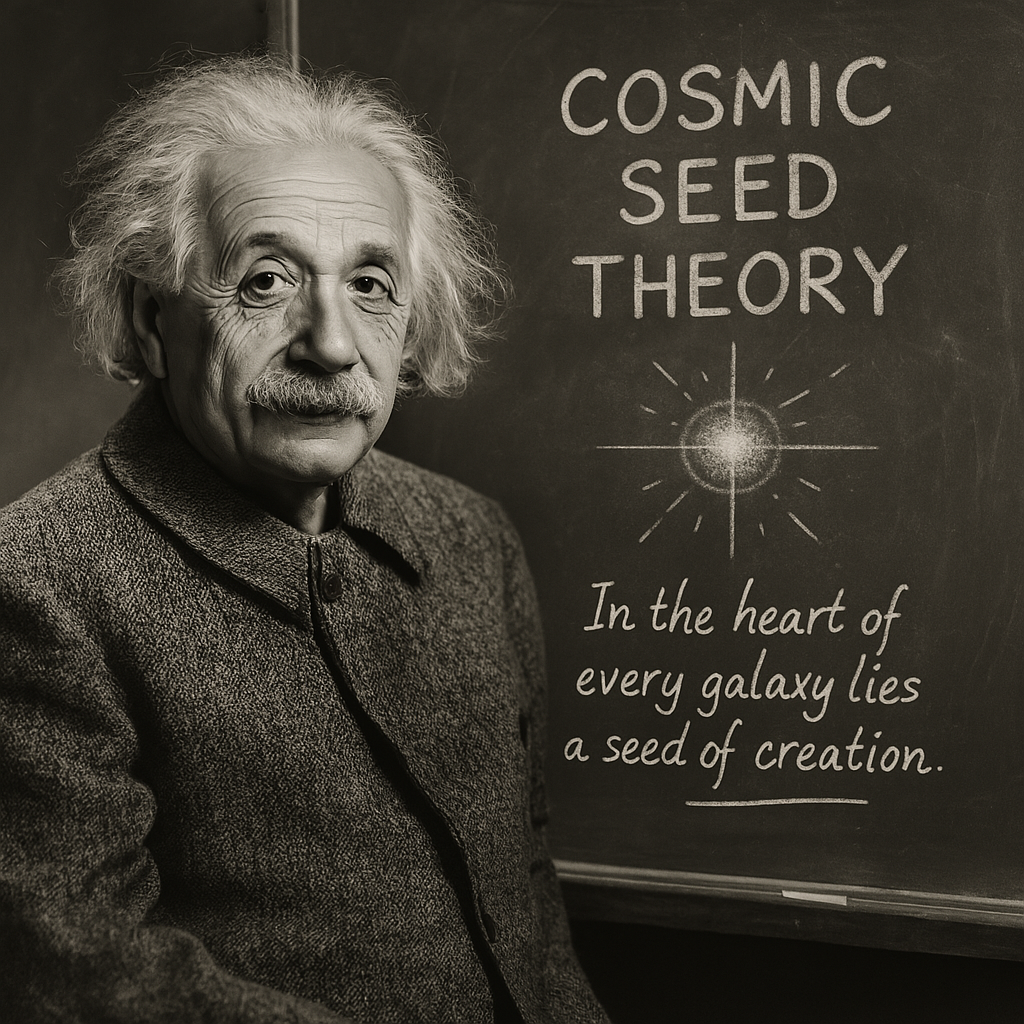
What If Einstein Had Discovered Cosmic Seed Theory in 1925?
What If Einstein Had Discovered Cosmic Seed Theory in 1925?
An Alternate Timeline Where Cosmology Got It Right the First Time
1925: Einstein Drops the Cosmic Bombshell
Fresh off the success of General Relativity, Einstein stuns the scientific world once again—not with equations, but with a revelation.
“The universe is eternal and infinite.
But galaxies? They are born.”
In a quiet Zurich lecture, he describes Cosmic Seeds—immense, rotating singularities that grow silently at the centers of space. When one reaches critical mass, spacetime buckles and erupts in a localized expansion event.
A galaxy is born.
No universal beginning. No singularity. No divine echoes—just clean, testable physics. Galaxies form the way stars do: naturally, predictably, and repeatedly.
1940s–50s: The Big Bang Theory Emerges—and Fizzles
A few voices, like Lemaître and Gamow, propose an alternative:
What if everything came from a single explosion?
But the physics community shrugs.
Why invent a universal bang when Cosmic Seed Theory already explains:
- Galactic structure
- Redshift
- Rotation curves
- Cosmic microwave radiation
Fred Hoyle’s mocking nickname—“the Big Bang”—fails to stick. The theory fades into footnote status: clever, but unnecessary.
1965: The CMB Is Detected—Einstein Vindicated
Penzias and Wilson stumble upon a mysterious microwave hum.
But in this timeline, there’s no cosmological crisis.
“From within a bang,” Einstein once said,
“one sees the firelight evenly spread.”
The Cosmic Microwave Background is interpreted not as the echo of creation, but the afterglow of our own galactic expansion—the fingerprint of the Milky Way’s birth.
Smooth. Uniform. Exactly what CST predicted.
No inflation. No singularity. Just perspective.
2000s: The CMB Is Flat—Just Like Our Galaxy
WMAP and Planck confirm the universe is astonishingly flat.
But that’s no surprise.
“Of course it’s flat,” cosmologists say.
“We’re inside our own bubble of expansion. Every galactic Big Bang creates a flat internal horizon. Einstein told us that a century ago.”
No need for inflationary gymnastics.
No fine-tuned parameters. Just local curvature.
2025: JWST Finds Mature Galaxies at the Edge—As Expected
When the James Webb Space Telescope discovers massive, well-structured galaxies at extreme distances, no one panics.
No headlines scream “Galaxies Too Early!”
No last-minute patchwork from theorists.
Instead:
“Yes,” astronomers say.
“Galaxies appear early—because they’re born individually, not all at once. Every one is the product of its own Cosmic Seed.”
CST shines brighter than ever.
Today: Can We Prove Einstein Wrong?
In this timeline, the burden of proof rests with those who still cling to a universal creation—a theory that demands:
- Unseen particles
- Phantom forces
- A beginning that sounds suspiciously like Genesis
Meanwhile, Cosmic Seed Theory only requires:
- Spacetime
- Mass
- Rotation
Everything else flows naturally.
Final Thought
Einstein didn’t just rewrite physics.
He rewrote the story of existence.
And in this version of history, humanity never mistook its local cosmic fingerprint for the signature of creation.
Maybe—just maybe—it’s not too late to return to the real path.
“The cosmos has no beginning.
Only the galaxies do.”
— Einstein, 1925 (Alternate Timeline)
